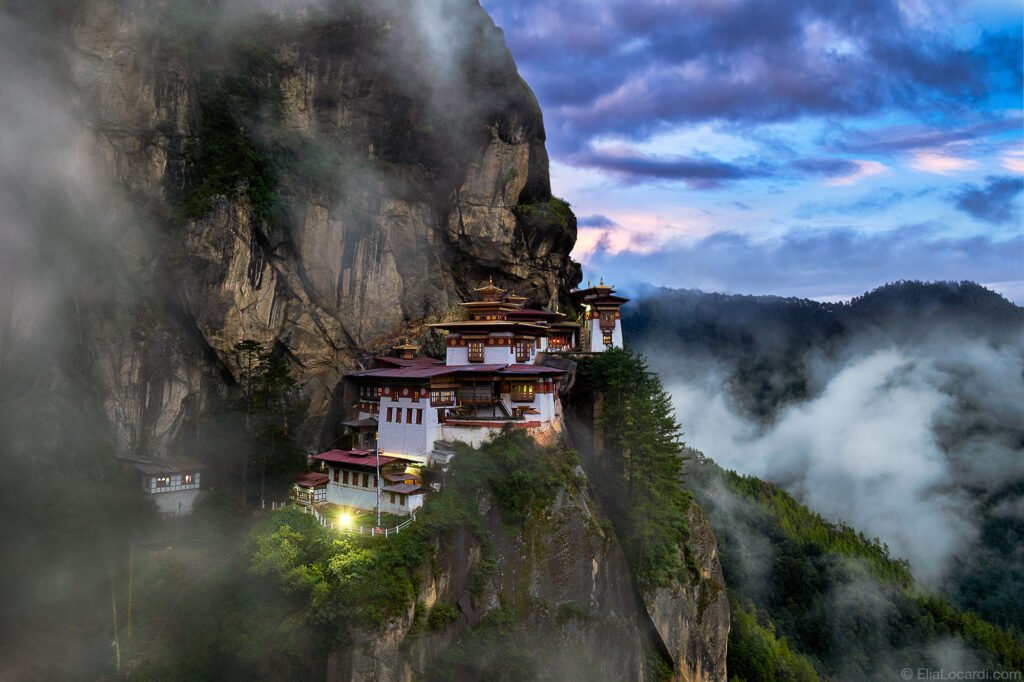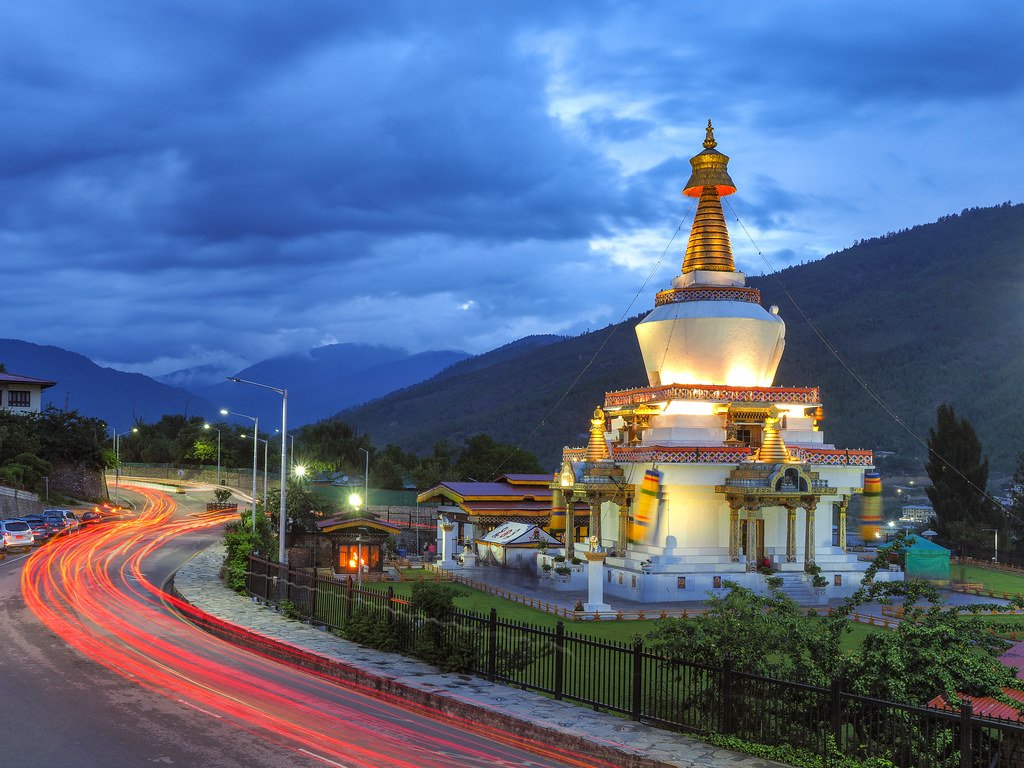Punakha Dzong
Punakha Dzongkhag has been inextricably linked with momentous occasions in Bhutanese history.
It served as the capital of the country from 1637 to 1907 and the first national assembly was hosted here in 1953. Punakha Dzong is not only the second oldest and second largest dzong but it also has one of the most majestic structures in the country. Readmore
Paro Taktsang
The small cliffside monastery known as the Tiger’s Nest is said to be the meditation site of an eighth-century Buddhist master.
The small cliffside monastery known as the Tiger’s Nest is said to be the meditation site of an eighth-century Buddhist master.
Tourists planning to visit the Tiger’s Nest have to indulge in a short hike. Due to its location, there are no vehicles that can drive one up to the monastery. Readmore
Memorial Chorten
The National Memorial Chorten or the ‘Memorial Stupa’, or the ‘Thimphu Chorten’ is revered as the most visible religious landmark in Bhutan. Built in 1974, this Buddhist stupa on Doeboom Lam in Thimphu Valley is one of the most eminent landmarks in the entire country.
Dedicated to the third Druk Gyalpo, this stupa is adorned with golden spires and bells, and does not embodies any human remains. It is rather a stupa that represents universal peace and brotherhood. Thus, it is fondly called the ‘Seat of Faith’ by the locals. Readmore
Buddha Dordenma
There goes a saying that ‘the closest place one might ever get to heaven on earth is Bhutan’. Bhutan, the Land of the Thunder Dragon, is situated in the eastern edge of the Himalayas, it gives us a glimpse of monks, monasteries, Buddhism, yaks, arts, and much more.
Though the country has become far more than what it was during the olden age, they have managed to maintain and preserve their culture and traditions in everything they could. The Shakyamuni Buddha is one of the largest sitting statues of Buddha in the world and the location is called the Buddha Point. Readmore
Dochula Pass
Dochula pass is located on the way to Punakha from Thimphu. The pass is a popular location among tourists as it offers a stunning 360 degree panoramic view of Himalayan mountain range. The view is especially scenic on clear, winter days with snowcapped mountains forming a majestic backdrop to the tranquility of the 108 chortens gracing the mountain pass.
Known as the Druk Wangyal Chortens- the construction of these108 chortens was commissioned by the eldest Queen Mother, Her Majesty Ashi Dorji Wangmo Wangchuk. Readmore
Gangtey Monastery
Gangtey Goempa, the Gangtey monastery, is perched a top a small hill that rises from the valley floor. The Monastery is surrounded by a large village inhabited mainly by the families of the 140 Gomchens who take care of the Monastery. In winter this families, together with the monastery’s ten monks, move away to another monastery, a day’s walk to the south.
Gangtey, which is now controlled by the government, is the only Nyingmapa monastery on the western side of the Black Mountain’s and is also the biggest Nyingmapa monastery in Bhutan. It is directed by Gangtey Tulku, the ninth reincarnation (Tulku) to bear that name. Readmore
Haa Valley
The Haa Valley is one of the best lesser known valleys in Bhutan to visit, having only opened to tourism in 2002. It is hidden above Paro and the development of hotels has been banned for now in an effort to retain its rustic old world charms.
Although very close, the Haa Valley has not been developed in the same way as Paro and here you will get a feel for the more traditional way of life that is more commonly seen in the eastern part of the country. Readmore
Royal Manas National Park
Bhutan’s Crown Jewel, the Manas National Park represents the largest example of tropical and sub-tropical ecosystems in Bhutan.
This park has only recently been opened to the public and offers thousands of animal and plant species, many of which are globally endangered, it is not only the most diverse protected area in the Kingdom but also noted as one of the world’s biologically outstanding parks.








